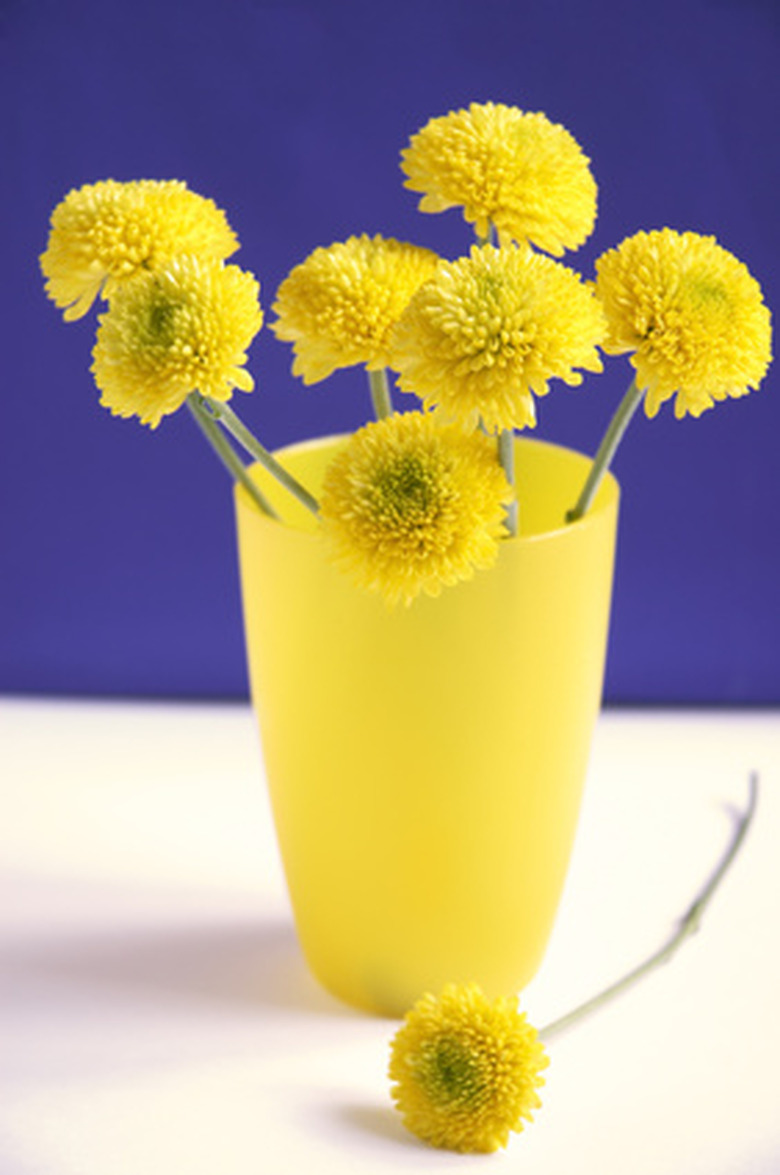How To Put An Aspirin In The Water For Fresh Flowers
Things Needed
- 1 to 2 uncoated aspirin
- 1 gallon of water
- Copper penny
- Sharp knife
- Flowers
According to gardening expert Marion Owen, the salicylic acid in aspirin stops flowers from forming a substance it produces naturally– salicylic acid–when wounded, which is designed to help the plant fight off disease, but also causes the flower to wilt faster. Others believe that aspirin helps lessen the bacteria in the water or works by increasing the carbohydrate content in the water. Either way, it is common to also add a copper penny to the water. The copper in the penny helps decrease the pH in the water, which helps keep the flowers fresher for longer.
Step 1
Fill a container with 1 gallon of water. Use lukewarm water, except on bulb flowers. Bulb flowers, such as tulips, daffodils and hyacinths, need cold water.
- According to gardening expert Marion Owen, the salicylic acid in aspirin stops flowers from forming a substance it produces naturally– salicylic acid–when wounded, which is designed to help the plant fight off disease, but also causes the flower to wilt faster.
- The copper in the penny helps decrease the pH in the water, which helps keep the flowers fresher for longer.
Step 2
Crush the aspirin thoroughly. According to Harvey Ellis of Fine Gardening, use between 250 to 500 milligrams of aspirin per gallon. Using more will do more harm than good.
Step 3
Place the crushed aspirin into the water.
Step 4
Stir the water until all the aspirin has dissolved.
Step 5
Pour the water into a vase.
Step 6
Add a copper penny to the vase. Modern pennies will only have a thin copper coating. For the best results, use a Lincoln penny with a date of 1982 or earlier.
- Crush the aspirin thoroughly.
- Place the crushed aspirin into the water.
Step 7
Remove any leaves on the flowers that will be submerged in water.
Step 8
Cut about 1/2-inch off the bottom of the stem with a sharp, un-serrated knife. Cut each stem at a slant or angle to expose more stem to the water.
Step 9
Split each stem about 1/2 inch from the bottom, unless it is woody. For woody stems, peel the outer skin from around the bottom inch, or crush it with a mallet.
Step 10
Place the flowers into the vase with the water. Set the vase in a location that will not receive direct sunlight.
- Remove any leaves on the flowers that will be submerged in water.
- For woody stems, peel the outer skin from around the bottom inch, or crush it with a mallet.
Step 11
Change the water in the vase every two days.
References
- Fine Gardening: Aspirin Cures Common Plant Headaches; Harvy Ellis
- Plantea: Plants Feeling under the Weather?
- Reader's Digest.com: 8 Ways to Make Flowers Last Longer
- "Household Hints and Tips"; Better Homes and Gardens; 1990.
